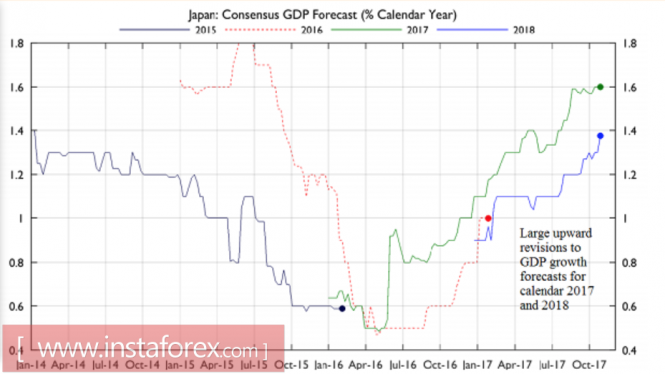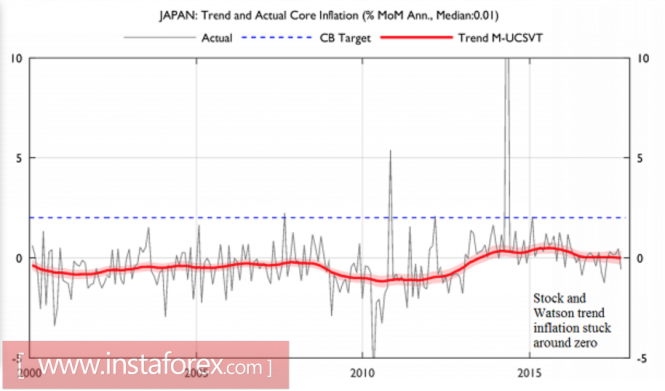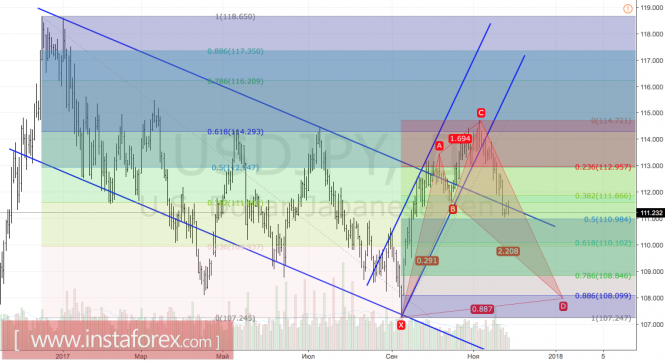While the focus of investors on foreign exchange is the policy, the most interesting currency of the week will be the Japanese yen. BoJ's strategy of targeting the yield curve made it more sensitive to the rates of the US debt market, with the increase in uncertainty leading to a decline in the USD/JPY quotes. However, this is by no means the only reason for the success of the "bears" in the analyzed pair.
One of the key drivers of the strengthening of the euro this year were Mario Draghi's hints on the normalization of the monetary policy of the ECB in June. Despite the readiness of the regulator to adhere to monetary expansion, he replaced the word "deflation" with "reflation," which signaled an attack by the bulls on the EUR/USD pair. Something similar occurred in November with the Japanese yen. Large banks have long argued that the BoJ buys fewer assets than it is provided for under the terms of the quantitative easing program. However, by the end of autumn, the central bank's representatives paid attention to it.
For example, Haruhiko Kuroda spent a lot of time talking about the shortcomings of the yield curve that targets policy, and the new member of the Board of Directors, Hitoshi Suzuki, said that monetary policy can be changed in 2018. At the same time, the permanent improvement of the health of the economy of Japan, an increase in GDP forecasts and a strong labor market are factors that make it possible to rely on accelerating inflation and the reduction of the real yield of bonds.
Dynamics of GDP forecasts for Japan

Source: Financial Times.
Dynamics of Japanese inflation

Source: Financial Times.
Thus, the yen enters the path that is trodden by the euro, to which, together with the uncertainty prevailing over financial markets, makes the current peak of the USD/JPY pair quite logical. Despite the growing likelihood of creating a strong coalition in Germany, this issue has not been entirely resolved. According to the results of the Bild survey, 52% of the 1,225 respondents believe that the country will receive a new government, but 39% are certain of the opposite.
At least as much as the uncertainty over the passage of the bill on tax reform through the US Congress. Reuters indicates around 2 to 6 that are dissatisfied with the contents of the document of Republican senators, while the distribution of seats in the Upper Chamber (52 to 48) suggests that each vote will be worth its weight in gold. Donald Trump even intends to give a dinner party, during which he will try to influence the dissidents.
In my opinion, if the fiscal stimulus plan does not pass through the Senate, and Angela Merkel fails to create a coalition, then the USD/JPY pair will continue to move upwards in the direction of 108. In this scenario, one should expect large-scale selling in the US and German stock markets associated with them, a deterioration in the global appetite for risk and the growth in demand for certain assets - "safe haven." On the contrary, the success of both events will increase the risks of returning the quotations of the analyzed pair towards 113.
Technically, the support breakthroughs at 111 and 109.95-110.1 will allow the "bears" to count on the implementation of the target by 88.6% on the "Shark" pattern.
USD/JPY, daily chart

